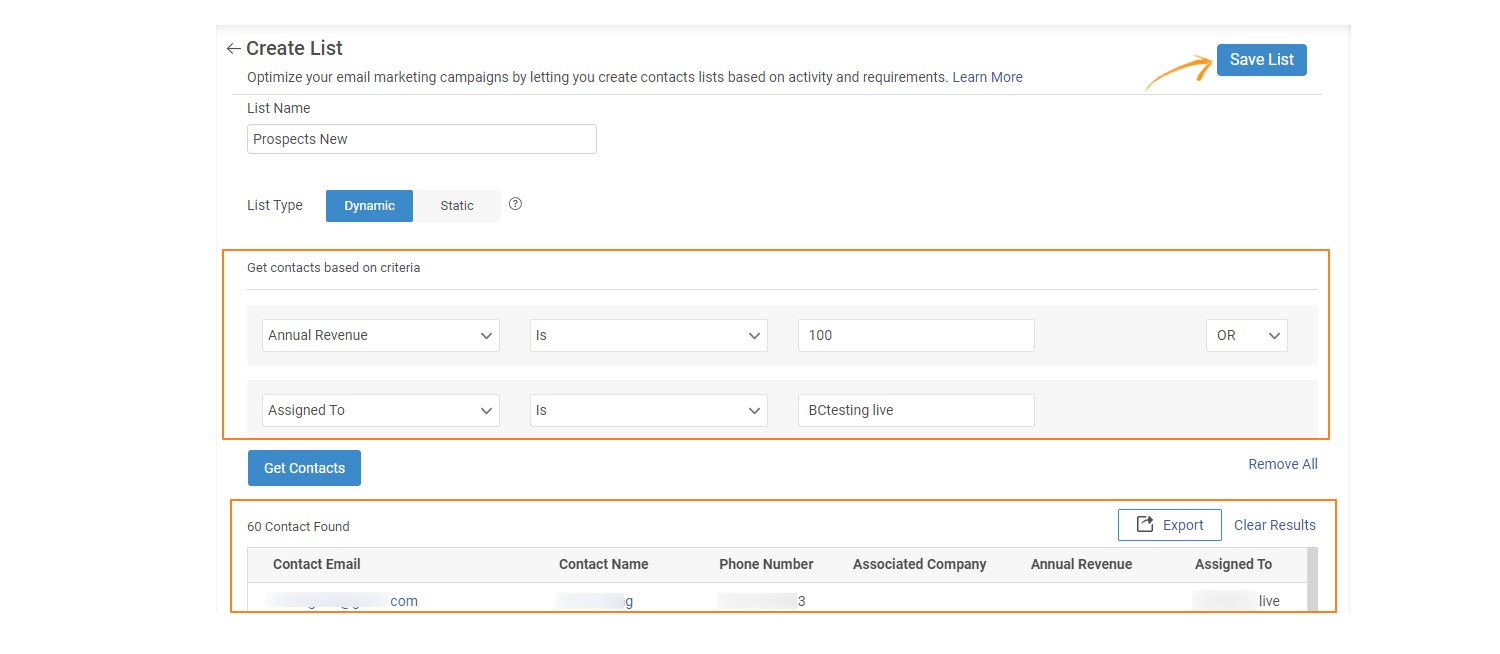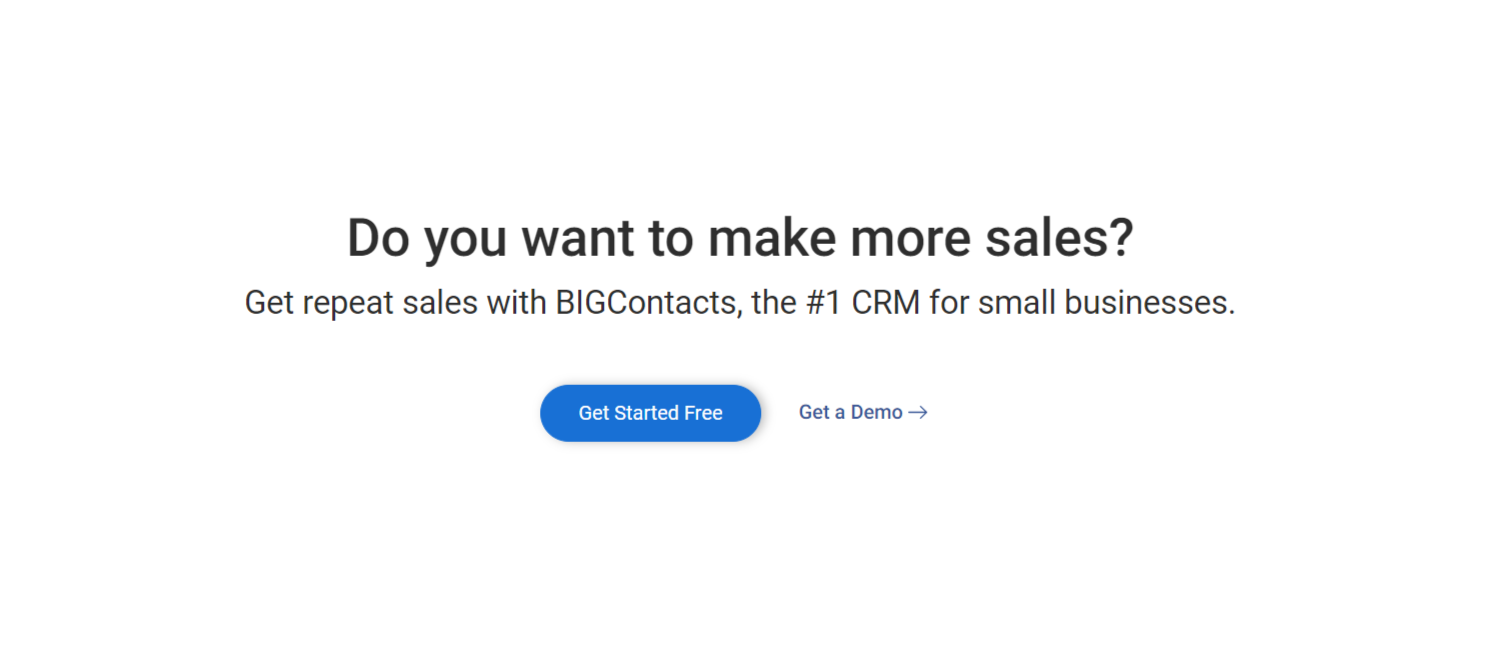Have you ever wondered why your leads aren’t converting as they should?
The problem often lies in how we capture those leads – or rather, how we fail to capture them effectively. But don’t worry, I’ve been there too, and I’ve discovered some powerful methods that can turn this around.
By the end of this blog, you’ll have a toolkit of proven techniques to capture leads more efficiently.
I’ll walk you through various methods, from optimizing your landing pages to using compelling CTAs. These strategies have worked wonders for me, and I can’t wait to share them with you.
In case you are getting started with lead capturing, here’s a quick video to help you out –
What Is Lead Capturing?
Lead capturing is the process of attracting and collecting contact information from potential customers, known as leads.
“You are out of business if you don’t have a prospect.” – Zig Zigler
When you capture leads, you’re essentially gathering details like names, email addresses, and contact numbers from people who have shown interest in your product or service. This information allows you to follow up with them, nurture their interest, and eventually convert them into paying customers.
Think of it as laying the groundwork for a relationship with your future clients. You’re setting the stage for future sales and business growth by effectively capturing leads.
Are you looking to capture leads using webforms?
Generate quality leads and grow your customer base with BIGContacts.
Why Lead Capturing Matters?
Lead capturing matters for several reasons, especially when you’re aiming to grow your business.
Here’s why having a strong lead-capturing system is essential:
1. Extracts Client Information Quickly
The moment someone shows interest in your product or service, you need to seize the opportunity. A good lead-capturing system helps you grab these potential clients immediately.
2. Fill Your Sales Pipeline
Capturing leads ensures you have a steady flow of potential customers to follow up with. This sales pipeline is crucial for maintaining consistent sales and growth.

3. Enhances Marketing Efforts
When you capture leads, you gather valuable information about your audience. This data helps tailor your marketing strategies to meet their needs and interests better.
Read more: What is Sales Lead Generation [+ 9 Proven Strategies That Work]
4. Improves Conversion Rates
A well-designed lead-capturing software increases the chances of turning interested visitors into paying customers. By engaging them early, you build relationships that lead to conversions.
5. Saves Time and Resources
Automating your lead-capturing process means you can focus on other important aspects of your business, like closing deals and providing excellent service.
So, investing time and effort into capturing leads isn’t just important – it’s essential for your business’s success.
If you want to learn about capturing and nurturing resources, check out this helpful course:
How to Create a Lead-Capturing Strategy
Creating an effective lead-capturing strategy can feel overwhelming, but it doesn’t have to be. Here are some simple, practical steps to grab your audience’s attention and convert those casual browsers into loyal leads –
1. Define Your Lead Capturing Objective
First thing first—what’s the objective of your lead capture?
Do you want to generate more soft leads, get more newsletter signups, encourage downloads of a guide, or secure more sales meetings?
While the main goal is ultimately to generate more revenue, it’s crucial to understand the specific actions you want your prospects to take. The type of content you create and distribute should align with where your lead is in their sales journey.
For instance, a lead capture page might focus on providing valuable insights to encourage newsletter signups or offer a free eBook to entice potential clients into booking a sales meeting.
Knowing exactly what you need helps you focus your efforts and refine your approach, ensuring that your lead-capture efforts are active and successful.
2. Define Your Target Audience
Knowing your target audience is important for creating an effective lead-capturing strategy.
First, identify your ideal customers and understand their needs, interests, pain points, and preferences. This insight is crucial for designing your content and making your web lead capture efforts successful.
Knowing who your audience is helps you craft messages that resonate with them.
Are they looking for solutions to specific problems? Do they have certain interests that align with your products or services?
By answering these questions, you can design lead-capturing strategies that attract the right people and keep them engaged.
For instance, if your target audience values quick solutions, highlight how your offerings save time. If they prioritize cost-effectiveness, emphasize your competitive pricing.
3. Use a CRM With Built-In Lead Capturing Feature
Using a CRM with a built-in lead-capturing feature is a smart move to track leads more effectively. This ensures that all your potential clients are neatly organized and easily accessible.
A CRM with email marketing capabilities is ideal because it lets you track and nurture leads using the same tool. Imagine collecting a lead and immediately having their information stored, ready for follow-up emails and campaigns.
This integration simplifies your process, saving you time and effort. You can easily see where each lead is in your sales funnel and take the right actions to move them forward.
Plus, with a CRM, you get valuable insights into your lead collection process, helping you improve and optimize your strategies.
4. Monitor & Adjust Your Strategy
Like any other lead generation approach, monitoring and adjusting your lead capture strategy as needed is crucial.
Regularly review your results and see where leads are coming from and where you might be losing them.
Are your landing pages performing well? Is your call to action effective?
By analyzing these aspects, you can spot trends and identify areas for improvement.
When you make necessary adjustments, your marketing and lead generation teams can focus on providing sales with higher converting leads. This means more potential customers turning into actual clients.

What Are the Lead Capturing Best Practices & Strategies?
Capturing leads isn’t just about collecting names and emails; it’s about using smart practices and strategies that actually convert potential clients into loyal customers.
Here are some ways to make your lead-capturing process as efficient and effective as possible!
1. Use Various Types of Lead Magnets
Using various types of lead magnets is key to effective lead capturing. Lead magnets are valuable content or offer you provide to prospects in exchange for their contact information.
Here are some ideas to consider:
- High-Quality Content: Create valuable content like ebooks, whitepapers, webinars, checklists, templates, infographics, reports, and online courses. These are great for providing in-depth knowledge and value to your target audience.
- Discounts and Free Trials: Offer discounts or free trials to persuade potential customers to share their contact information. This is particularly effective if your product or service is something they need to experience firsthand.

- Choosing the Right Lead Magnet: Not every decision-maker is in the same stage of the buying process, so having a variety of lead magnets helps you capture leads at different stages. Consider what your audience finds valuable and relevant when making this decision.
- Testing & Adapting: Try something new if your current lead magnets aren’t working. For example, if your guide downloads aren’t generating leads, convert them into a newsletter or another format. If your social media efforts aren’t gaining traction, explore other platforms to promote your business and insights.
2. Use Lead Capture Forms
Lead capture forms are essential for gathering information about potential customers.
To make the most of these forms, here are a few tips:
- Minimize Form Fields: Keep your forms simple by asking only for the essential information. Too many fields can confuse visitors and lead to form abandonment. Start with just an email address or name to get the conversation going.
- Create Multi-Step Forms: If you need to collect more information, break your form into multiple steps. This reduces form fatigue and makes the process less daunting. Multi-step forms are great for detailed tasks like event registrations or shipping forms.
- Improve User Experience: Multi-step forms spread information across several views, making it easier for visitors to complete. This positive experience can increase your conversion rates and lead quality.
- Use Progressive Profiling: Gradually gather more information from return visitors over time. Replace fields they’ve already filled out with new ones. This avoids repetitive questions and helps you learn more about your leads without overwhelming them.
3. Optimize Landing Pages
You can optimize your website’s landing pages for lead capture in several simple ways. Here’s how:
- Clear Value Proposition: Start by clearly communicating what you’re offering and why visitors should be interested. Address a unique need or pain point of your target audience. Your value proposition should be upfront and compelling.
- Focus on the Offer: Keep the focus on what you’re offering and the primary call-to-action, like “Download Now.” Remove any unnecessary content, links, or navigation options that might distract visitors.
- Add Forms and Web Chat: Including forms and web chat can significantly boost your lead-capturing efforts. Forms allow visitors to provide their contact information. Web chat, whether with live agents or chatbots, offers immediate assistance and can capture lead details during the conversation.
4. Add Popups
Adding popups to your website’s landing pages is a great strategy for capturing leads. When used correctly, popups can effectively engage visitors, prompting them to take desired actions.
Here’s a quick guide on the different types of popups and how they work:
- Click Popup: These popups appear when a visitor clicks on a specific text or image. Often used in eCommerce, they can also serve as a lead generation tool by showing an offer after a click.
- Scroll Popup: These popups show up after a visitor has scrolled a certain distance on your page, indicating interest.
- Timed Popup: These popups appear after a visitor has spent a specific amount of time on your site, making them useful for gauging interest and capturing leads.
- Entry Popup: These popups appear as soon as a visitor lands on your page. They are often used to announce sales or offer gated content.
- Exit Popup: These popups are triggered when a prospect is about to leave your site, offering a last chance to capture their attention and lead.
To maximize the effectiveness of your popups, place them at points where visitors are most likely to engage, such as on popular blog posts. This approach ensures your popups capture leads without being overly intrusive.
5. Implement Chatbots
Implementing chatbots on your website is one of the smartest moves for capturing leads. While they’re often seen as customer service tools, chatbots are also powerful marketing and sales assets.
Here’s why you should consider using them as part of your lead capture software:
- Improved Customer Experience: Chatbots can provide instant responses and support, making visitors feel valued and attended to.
- 24/7 Lead Capture: Unlike human agents, chatbots work around the clock, ensuring you never miss a potential lead.
- Lead Qualification: Chatbots can ask the right questions to qualify leads before passing them to your sales team, saving valuable time.
- Increased Engagement: Their conversational approach makes interactions feel natural and engaging, boosting user participation.
Using chatbots, you can gather more information from leads compared to static forms, enhancing the quality of your lead capture. The chatbot handles initial interactions and helps qualify leads before they reach your sales reps, who can then focus on high-quality leads.
6. Provide Social Proof
Showcasing social proof is a great way to build trust and credibility with your audience. When prospects see that other clients have had positive experiences with your product, they’re more likely to become leads themselves.
Here’s how you can effectively use social proof:
- Leverage Case Studies: Display testimonials from satisfied customers and detailed case studies showing how your product has helped others. These real-life examples are powerful tools for convincing potential clients of your value.
Here’s how you can showcase these examples:

- Share Client Testimonials: Encourage your customers to share their reviews and experiences. User-generated content, like reviews, can be incredibly persuasive because it comes from real people who have actually used your product.
- Use Review Software: Platforms like Google Reviews make it easy to gather and display customer reviews. These reviews can be a great addition to your lead capture software, enhancing its effectiveness by adding an extra layer of credibility.
7. Leverage Email Marketing
Email marketing is one of the most effective strategies for capturing and nurturing leads.
Here’s how you can make the most of it:
- Offer Valuable Content: Provide your subscribers with newsletters, exclusive offers, and educational resources. This keeps them engaged and shows that you value their time and interest.
- Segment Your List: Segment your email list based on demographics, interests, or purchase history. This allows you to send customized and relevant content, which increases the chances of conversion.

- Create Compelling Subject Lines: Your subject line is your audience’s first impression. Make it catchy and relevant to entice them to open the email.
- Include Strong Call-to-Actions: Encourage your readers to take the next step, whether it’s signing up for a webinar, downloading a resource, or making a purchase.
Here is an example of a high-performing CTA –

Read more: Mastering Mass Email CRM: Best Practices & Features
8. Quizzes & Surveys
Quizzes and surveys can be a great way to get consumers to engage with your business for the first time. These tools are not only engaging but also effective in capturing quality leads.
Here’s how they can work for you:
- Quizzes: Quizzes can be fun and informative, sparking interest from the get-go. Design quizzes around industry trends, skills tests, or readiness for changes in the market. They are a great way to educate and engage prospects.
Here is a quick guide to creating online quizzes for your website –
- Surveys: Surveys allow you to gather valuable feedback and insights from your website visitors. You can ask questions related to their preferences, industry opinions, or experiences. This helps in understanding your prospects better and tailoring your offerings accordingly.

The key to these tools is that they require more time to complete than a simple lead capture form, but they offer valuable insights in return.
To get the results, prospects must provide their email addresses, which helps you build your contact list. Offering incentives like discounts or contest entries can further encourage participation.
9. Ensure Mobile Responsiveness
Ensuring your lead-capturing efforts are effective means making your content responsive to mobile devices. Here’s why and how you can do it:
- Optimize for All Devices: Make sure your landing pages, emails, and other lead generation content look great on every device, whether it’s a phone, tablet, or desktop. This prevents missed conversion opportunities from mobile users.
- Test on Mobile: Always test your content on various devices. Ensure it displays properly and loads quickly. A slow or poorly formatted page can turn potential leads away.
- Simplify Layouts: Keep your designs simple and clutter-free. Focus on the most important content to make it easy for mobile users to navigate.
- Thumb-Friendly Design: Make your CTA buttons and form fields easy to tap. They should be large enough for users to click without any hassle on small screens.
- Quick Loading Times: Speed matters. Optimize images and minimize heavy scripts to ensure your pages load swiftly on mobile networks.

By following these best practices, you can create a seamless experience for all users, boosting your lead-capturing success and ensuring no potential lead is lost due to poor mobile responsiveness.
How to Capture Leads in CRM?
Capturing leads in a CRM can revolutionize your business by streamlining the process of turning prospects into customers. A CRM, or Customer Relationship Management tool, is designed to help you manage and nurture your leads efficiently.
Here’s how a CRM can help in capturing leads effectively:
- Contact Management: Start by organizing your contacts. A CRM with contact management software helps you keep all your customer information in one place, making it easier to track and manage.
- Task Management: Task management features help you stay on top of your to-do list. This ensures you follow up with leads promptly, improving your chances of conversion.
- Email Marketing: Use the email marketing feature to reach out to your leads regularly. You can send personalized emails using in-built templates that engage and nurture your prospects.
- Sales Pipeline Management: Monitor your leads as they move through the sales pipeline. This helps you identify where each lead is in the buying process and what actions to take next.
A great example of a CRM tool that offers these features is BIGContacts. It’s designed to make lead capturing and management simple, ensuring you can focus on growing your business. With BIGContacts, you have all the tools you need to capture and convert leads efficiently.
For more details on how to capture leads and grow your sales with CRM, check out the quick video below.
How to Optimize Your Lead Capturing Strategy
Optimizing your lead-capturing strategy can make a huge difference in turning visitors into loyal customers. By refining how you gather and manage leads, you’ll see better results and more engagement.
Here are some ways to optimize your lead-capturing strategy –
1. Boost Your Lead Capturing with Gamification
Gamification is more than just a buzzword—it’s a powerful way to optimize your lead-capturing efforts. By adding game-like features to your website, you can significantly increase engagement and conversions.
Here’s how you can use gamification to capture more leads:
- Seasonal Campaigns: Use holidays to your advantage by gamifying your lead capture forms. For example, an advent calendar campaign can encourage visitors to provide their information in exchange for promotions, discounts, or new products.
- Interactive Questionnaires: Develop game-like questionnaires to gather more information about your customers. This helps bulk up your CRM with detailed data, enhancing your marketing efforts.
- Gamified Ads: Integrate quizzes, polls, or games into your ad campaigns and connect them to third-party websites. This way, you can capture leads even outside your own website.
Gamification can make your business stand out, boost customer loyalty, and attract more leads by creating fun and engaging experiences. Start optimizing your lead capturing today with these fun and effective strategies!
2. Target Visitors Effectively
80% of consumers are more likely to do business with a company that offers personalized experiences.
It’s not enough to just have different lead-capturing tactics in place; targeting your visitors at the right time is the key to increased conversions. Targeting is all about personalizing your approach.
Here’s how you can do it:
- Know Your Page: Customize your tactics based on what page your visitor is on. Different pages need different approaches.
- Visitor Location: Pay attention to where your visitors are on the page. Are they at the top, middle, or bottom? Tailor your lead-capturing tactics accordingly.
- Traffic Source: Understand where your visitors came from. Did they arrive via a campaign URL, a previous page, or another traffic source? This helps you personalize their experience.
- Geographic Location: Consider which country your visitors are from. Personalization based on geographic location can significantly enhance engagement.
- Repeat Visitors: Track how many times someone has visited your site. Offer unique experiences for first-time visitors versus returning ones.
Boost Your ROI With Effective Lead Capturing
Boosting your ROI starts with effectively capturing quality leads. Begin by creating compelling content that addresses the pain points of your target audience. Utilize lead magnets such as eBooks, whitepapers, and webinars to offer value in exchange for contact information.
Next, optimize your landing pages with clear calls-to-action (CTAs) and user-friendly forms. Implementing chatbots can also enhance engagement by providing instant responses to visitor inquiries.
Integrating CRM tools can streamline the lead-capturing process. These tools help manage and nurture leads through automated workflows, ensuring no opportunity slips through the cracks.
For instance, a CRM like BIGContacts offers features like contact management, drip email campaigns, sales pipeline management, automated follow-ups, webforms for lead capturing, and more. This can not only improve efficiency but also encourage more personalized communication, leading to stronger client relationships.
Frequently Asked Questions (FAQ’s)
What is lead-capturing software?
Lead capturing software helps you collect and manage potential customer information through forms, landing pages, and automated workflows. It’s essential for gathering leads and integrating them into your CRM system. This software supports lead nurturing best practices by automating follow-ups, tracking interactions, managing sales pipelines, and personalizing communication to convert leads into loyal customers.
What features do you need in lead capture software?
When choosing lead-capturing software, look for customizable web forms, CRM integration, and automated follow-ups. Key features include real-time notifications, performance analytics, and multi-channel support to capture leads from social media and email. Also focus on the scalability and the extent of customization offered.
Which is the best lead-capturing software?
The best lead-capturing software depends on your business needs, but BIGContacts is highly recommended. It offers robust features like automated lead tracking, customizable web forms, and seamless email integration to streamline the lead capture process. Its user-friendly interface and powerful CRM functionalities help manage and nurture leads efficiently, making it an excellent choice for boosting your ROI.
What is a lead capture page and its purpose?
A lead capture page is a webpage designed to collect contact information from website visitors, such as names and email addresses, typically in exchange for a free resource or offer. Its purpose is to gather potential customer details for future marketing and sales efforts, helping businesses build a database of leads to nurture and convert.
How can you optimize a lead capture page?
Optimize a lead capture page by using a clear and compelling headline, keeping forms short and simple, and including a strong call-to-action. Add social proof and trust signals, such as testimonials and security badges, to build credibility. Ensure the page has a fast loading time and is mobile-friendly.
What is the lead capture rate?
The lead capture rate is the percentage of website visitors who provide their contact information and turn it into leads. This metric helps measure your lead generation efforts and indicates how well your website or marketing campaigns convert visitors into potential customers.
FREE. All Features. FOREVER!
Try our Forever FREE account with all premium features!








